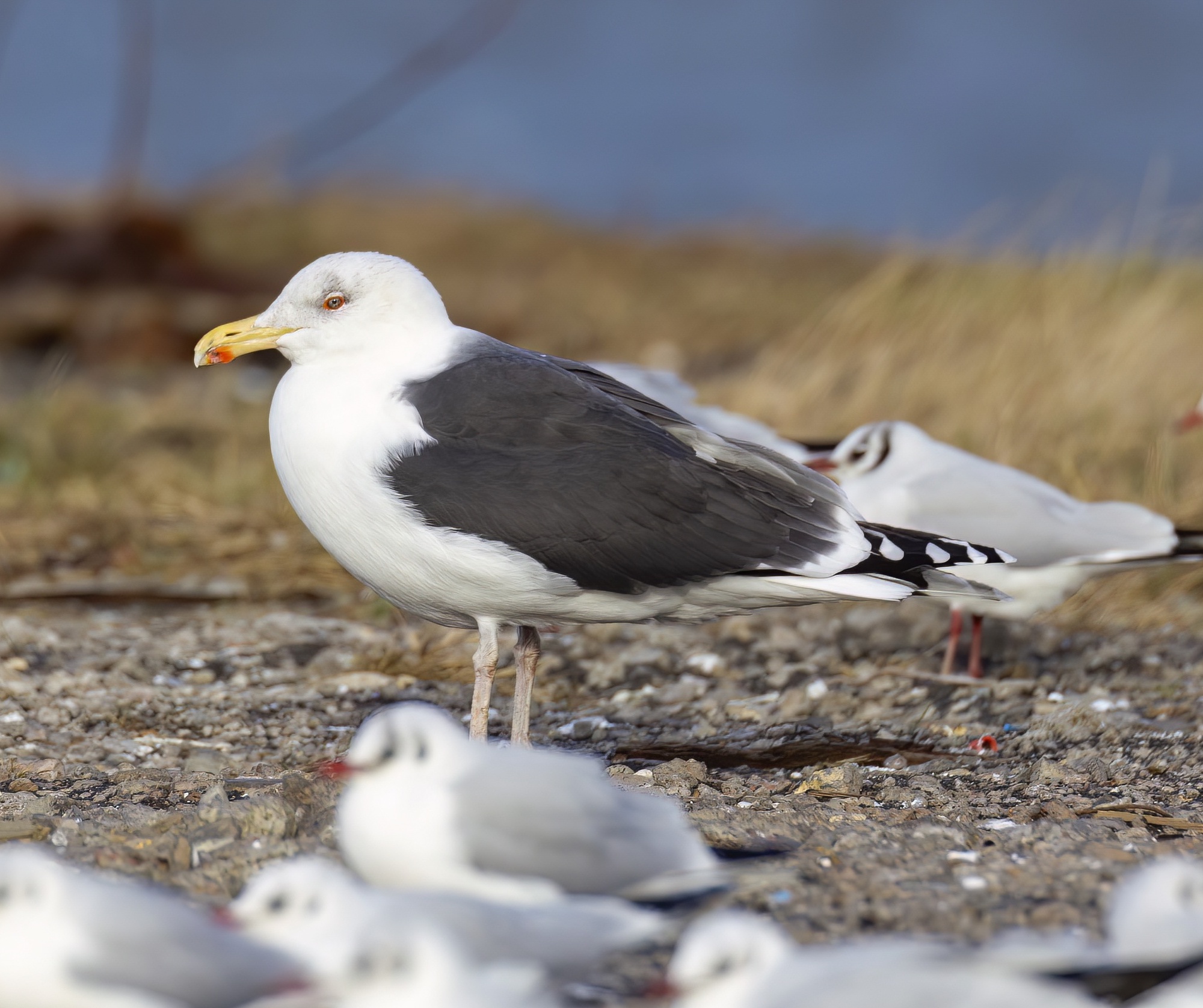Great Black-backed Gull Larus marinus
Very common passage migrant and winter visitor with some immatures remaining in summer.

The UK population is thought to be declining but no long-term trend information is available from the JNCC Seabird Monitoring Programme. Birds from Scotland, Norway and Denmark winter in Lincolnshire based on ringing data. The relative abundance map in winter for this species in BTO Atlas 2007-11 shows that Lincolnshire is one of the most important wintering sites for Great Black-backed Gull in Britain. The top site for this large gull on the coast is Gibraltar Point. During the 5 years to 2018, LBR reports reflect that the largest peak site counts were here in four out of five years. The peaks were 500 in October 2014, August 2015 and October 2017. Barton Pits also had a peak of 500 in September 2014. The closure of domestic refuse tips across the county over the last 15 years has had an impact on the volume of wintering gulls in general. One of the few remaining open tips in the county, at Kirkby on Bain, had a peak count of 250 in December 2016 and a lowest peak count of 75 in January 2017. The actual passage and wintering populations are very difficult to estimate. Of 49 colour-ringed birds seen on the Skegness-Gibraltar Coast up to 2018, 32 had come from Norway, eight from Denmark and nine from the UK; a smaller number have originated from The Netherlands. Other straight forward ringing recoveries have been of birds from Russia as well as the 'usual' Scandinavian countries.
(Account as per new Birds of Lincolnshire (2021), included September 2022)
